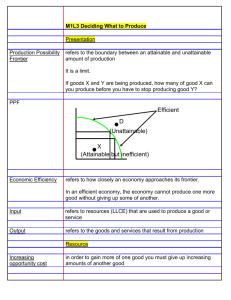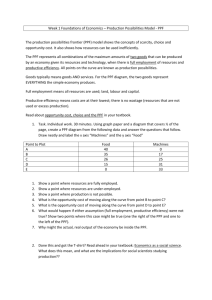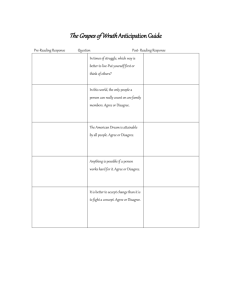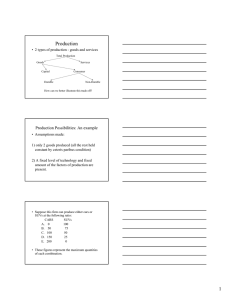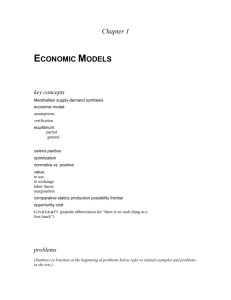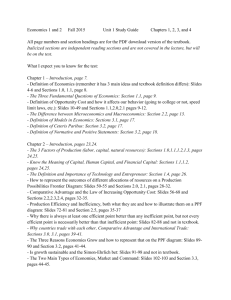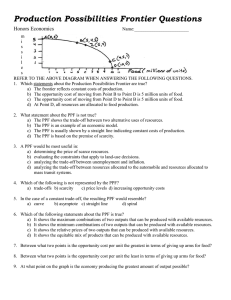Two Examples of Economic Models The Circular Flow Diagram: A
advertisement
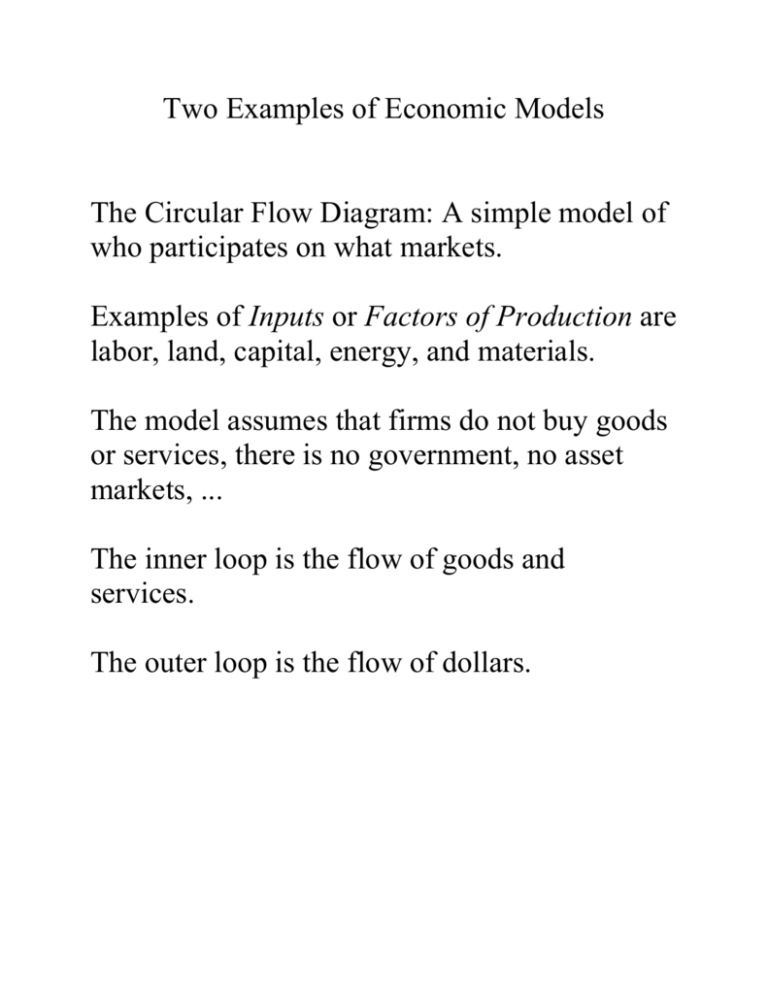
Two Examples of Economic Models The Circular Flow Diagram: A simple model of who participates on what markets. Examples of Inputs or Factors of Production are labor, land, capital, energy, and materials. The model assumes that firms do not buy goods or services, there is no government, no asset markets, ... The inner loop is the flow of goods and services. The outer loop is the flow of dollars. The Production Possibilities Frontier A model that shows the combination of outputs (here, computers and cars) that the economy is capable of producing. Point C is not feasible. Point D is feasible but not efficient. A, B, E, and F efficient. There is a tradeoff. By comparing A and B, we see that the opportunity cost of 100 cars is 200 computers, or 2 computers per car. Similarly, the opportunity cost of a computer is .5 cars. The opportunity cost of a car is the slope of the PPF. *slope of PPF* = *ªComp/ªCar* = 2. Opportunity cost depends on where you are: the PPF is bowed outward. Technological advance will shift the PPF, and could lead to more production of each good. The Economist as Policymaker Scientists seek to describe how the world is, making positive statements like, “higher gasoline taxes will reduce gasoline consumption.” Policymakers seek to prescribe how the world should be, making normative statements like, “the gasoline tax should be higher.” Judging normative statements involves positive analysis and our personal values (norms). Why Economists Disagree: 1. They disagree about the validity of positive theories. For example: would a switch from an income tax to a consumption tax cause savings to increase substantially? 2. They have different values. For example, suppose Peter and Paul take the same amount of water from the town well and are taxed to pay for repairs as follows: Peter: income is $50,000, tax is $5,000 (10%) Paul: income is $10,000, tax is $2,000 (20%) Two economists with different values will disagree over how to raise the $7,000. 3. They really don’t disagree as much as people think they do. Politicians ignore economists’ consensus views (steel tariffs), or the media can give the minority view equal attention. Graphing Data The demand curve to illustrate coordinate systems. The data on the novels purchased by Emma can be presented in tabular form or graphed using a coordinate system. The quantity demanded (x-coordinate) and price (y-coordinate) are negatively related. A flat demand curve means that the quantity demanded changes a lot for a given change in price. A steep demand curve means that the quantity demanded does not respond very much to price changes. It is important to distinguish movement along a curve (price changes) vs. a shift of the curve (income changes). The slope can be computed as the change in the y coordinate divided by the change in the x coordinate. Graphs tell us about “correlations”, not cause and effect. An omitted variable can be causing both variables on the graph to move. See the example of cancer risk and lighters. We can be wrong about which variable is causing which: reverse causality. Does a police presence cause violent crimes, or do violent crimes compel a police presence? Even timing is sometimes misleading: buying a crib is often followed by birth of a child.

